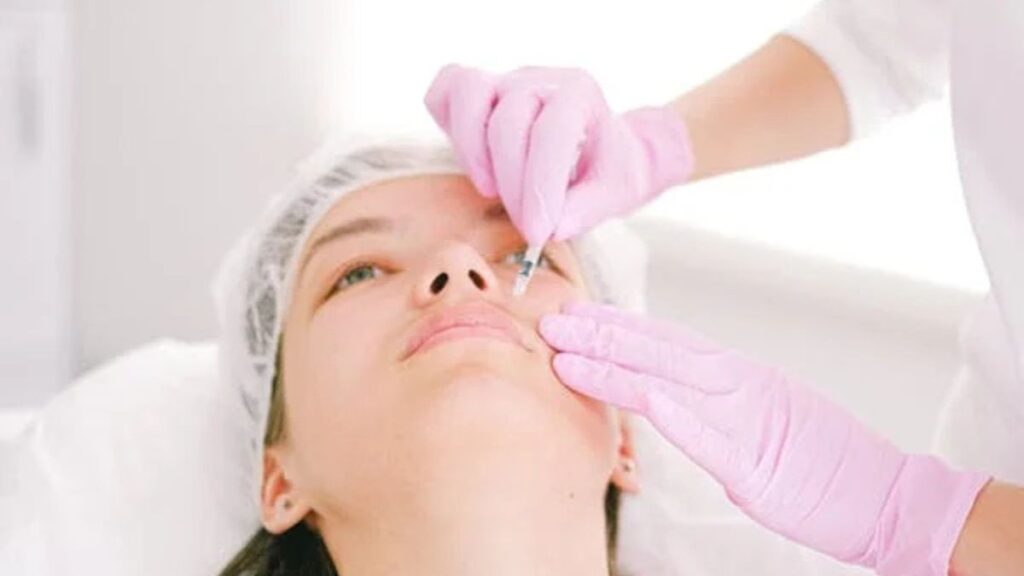Dermal fillers have gained significant popularity in the beauty industry due to their ability to provide instant results in enhancing facial features. The appeal of these treatments lies in their efficiency and their versatility. Used for everything from plumping lips to smoothing wrinkles, dermal fillers involve a range of processes that the average person may not fully understand. Read on to explore the mechanisms behind dermal fillers and how they achieve remarkable effects quickly.

What Are Dermal Fillers?
Dermal fillers are gel-like substances injected beneath the skin to restore lost volume, enhance facial contours, and fill in wrinkles and fine lines. Made of hyaluronic acid, a naturally occurring substance in the body, these fillers work by attracting water molecules to the treated area. When injected, they create a plumping effect that rivals more invasive surgical procedures. The immediate plumping and revitalization effect has made dermal fillers a favored choice among individuals seeking non-surgical treatment options.
Types of Dermal Fillers
There are several types of fillers available on the market, each designed for specific purposes. Hyaluronic acid fillers remain the most popular due to their biocompatibility and the natural appearance they provide. Among the most specialized methods involves the hyaluronic pen lip filler, which utilizes a pen-like device to deliver the filler through the skin without needles. This technology enhances comfort and minimizes bruising, an attractive option for those hesitant about traditional injections.
Other types include collagen-based fillers, which enhance skin elasticity, and poly-L-lactic acid, which stimulates collagen production to improve skin texture over time. Calcium hydroxylapatite fillers provide a firmer texture and are often used for deeper wrinkles and volume loss. Each type serves a unique function and varies in duration, so individuals must consult with professionals to determine the best fit for their desired outcomes.
The Injection Process: What to Expect
Before undergoing dermal filler treatment, individuals should have a thorough consultation with a qualified practitioner. During this session, the professional evaluates facial anatomy, discusses aesthetic goals, and explains the different types of fillers available. Once the appropriate filler is chosen, the practitioner may apply numbing cream to enhance comfort during the injection process. They create precise injections at targeted sites and allow for customizable outcomes.
As the filler is injected, patients may feel a slight pressure or pinching sensation. Most treatments are relatively quick, taking about 30 minutes to one hour, depending on the areas being treated. After the procedure, patients often notice an immediate volume increase and a youthful appearance. Know, however, that full results may take a couple of days as swelling subsides.
Benefits of Using Dermal Fillers
Dermal fillers offer numerous benefits that make them appealing to a wide audience. First and foremost is the instant improvement in facial contours, providing immediate gratification for those seeking quick results. Most filler treatments require minimal downtime, allowing individuals to resume normal activities right after the procedure.
Compared to surgical options, dermal fillers are less invasive and involve fewer risks and complications. The versatility of fillers also allows them to be used in various areas such as cheeks, lips, and under the eyes, catering to unique aesthetic preferences. Hyaluronic acid fillers boast a natural appearance that blends seamlessly with surrounding tissues. Their effects can last several months to a couple of years, based on the specific product used and the area treated, making them a worthwhile investment in one’s beauty regimen. All these advantages contribute to the growing trend of non-surgical enhancements in the beauty field.
Possible Side Effects and Risks
Although dermal fillers offer numerous benefits, be aware of potential side effects and risks associated with their use. Common effects include swelling, bruising, and redness at the injection site. They generally subside within a few days. Unfortunately, serious complications, although rare, may occur: infections, allergic reactions, or vascular occlusions. To minimize risks, choose a qualified and experienced practitioner who adheres to safety protocols and uses high-quality products.
Discussing medical history, allergies, and any previous aesthetic procedures during the consultation helps professionals tailor the treatment to individual needs while reducing the likelihood of adverse effects. Awareness and understanding of these risks empower individuals to make informed decisions regarding their treatment plans and facial aesthetics.
Maintaining Results: Aftercare Tips
After receiving dermal fillers, proper aftercare maintains results and ensures a smooth recovery process. It is advisable to avoid strenuous exercise or excessive heat exposure for the first 24 to 48 hours post-treatment to minimize swelling and bruising. Keeping the head elevated can also reduce swelling in the long term.
Patients should refrain from touching or pressing on the treated areas to reduce the risk of displacement. Stay hydrated and use gentle skincare products to further support healing and prolong results. Schedule follow-up appointments with the practitioner to assess the need for touch-ups or adjustments. These steps ensure that patients achieve and maintain the desired outcomes while fostering a positive experience with dermal fillers.
The allure of dermal fillers lies in their ability to provide rapid, noticeable results without the invasiveness of surgical procedures. Understanding the processes behind these treatments enhances appreciation for their effectiveness and fosters informed decision-making. With continual advancements in filler technology and techniques, individuals can enjoy beautiful outcomes that elevate their confidence.







